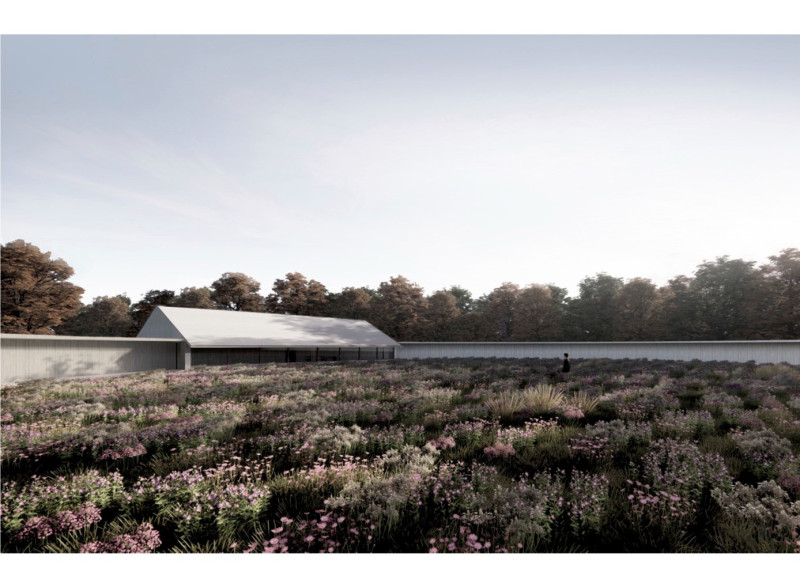5 key facts about this project
The primary function of this hospice is to serve as a welcoming environment for individuals nearing the end of life, providing comfort, care, and a sense of community. It is essential for this type of architecture to create spaces that foster interactions among patients, families, and staff, while also offering areas for contemplation and solitude. In this regard, the design effectively balances communal and private areas, ensuring that residents have the freedom to engage with others or retreat for personal reflection as needed.
The architectural composition showcases a low-profile silhouette that harmonizes with the landscape, an aspect that encourages a sense of belonging. The roof’s gentle pitch draws upon traditional German barn architecture, marrying cultural references with contemporary sensibilities. The careful selection of materials plays a crucial role in the overall design. Wood is used prominently throughout the structure, imparting warmth and familiarity. Additionally, concrete serves as a robust structural component, while expansive glass panels facilitate a strong connection between the indoor and outdoor spaces, allowing natural light to permeate the building. These design choices create a comforting atmosphere that is essential for the hospice's users.
Interior spatial arrangements are intentionally designed to enhance the experience of the residents. Communal spaces, such as lounges and dining areas, invite social interaction and support a shared sense of community. In contrast, private rooms are designed with ample natural light and thoughtful layouts that prioritize patient comfort. The wide hallways carefully considered for accessibility also ensure ease of movement, reflecting a commitment to accommodating various mobility needs.
Another significant aspect of this architectural project is its engagement with outdoor spaces. Surrounding gardens filled with native flora provide sensory experiences and opportunities for patients to connect with nature. This aspect not only enhances the aesthetic appeal of the facility but also facilitates therapeutic interactions, enabling residents to enjoy fresh air and the calming presence of greenery. The strong emphasis on natural elements demonstrates an understanding of how physical spaces influence emotional well-being, illustrating the project’s commitment to holistic care.
The unique design approaches employed in this project extend beyond traditional architecture, as they consider the nuanced needs of those who are at a vulnerable stage of life. By focusing on creating an environment that nurtures both body and spirit, the design emphasizes that architecture can and should contribute positively to healing experiences. The harmonious integration of the building with its surroundings also reflects a sustainable approach, where local materials and ecological considerations play a role in both aesthetics and longevity.
This project serves as a valuable example of how thoughtful architectural practices can create spaces that are not only functional but deeply human-centered. Through its design, this hospice demonstrates a sensitive response to the needs of terminally ill patients and their families, showcasing how architecture can effectively reflect empathy and care.
For a more comprehensive understanding of this architectural project, including architectural plans, sections, and a deeper dive into the design elements, readers are encouraged to explore the project's presentation for additional insights and details.























